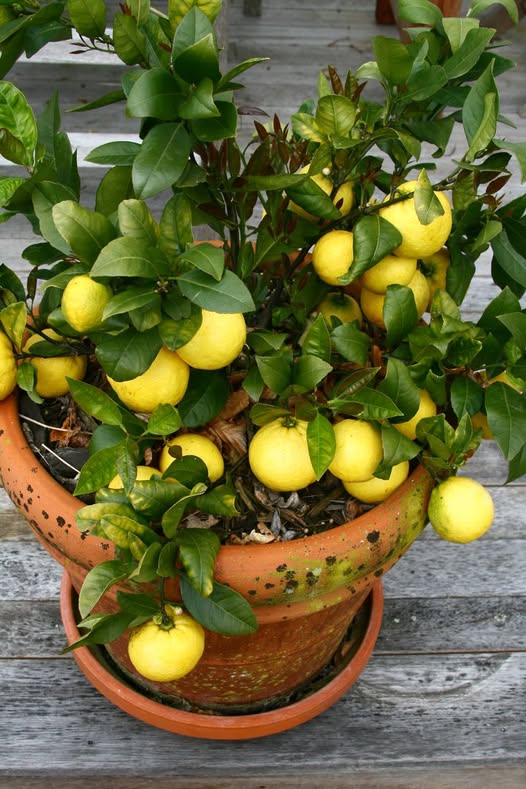ADVERTISEMENT
Water the tree when the top inch of soil feels dry. Meyer lemon trees prefer well-draining soil, so ensure the pot has drainage holes.
Water thoroughly, ensuring the excess water drains away. Avoid letting the tree sit in water, as this can lead to root rot.
In winter, reduce watering as the tree’s growth slows down, but don’t let the soil dry out completely.
5. Pot and Soil
Choose a container that’s at least 18 inches (45 cm) wide and has good drainage. Meyer lemon trees don’t like their roots to be waterlogged.
Use a well-draining, slightly acidic potting mix, such as a citrus or cactus mix. You can also make your own mix with equal parts of peat moss, perlite, and pine bark.
6. Fertilizing
Lemon trees need regular feeding to produce fruit. Use a fertilizer formulated for citrus trees, or one that is high in potassium, phosphorus, and magnesium.
Fertilize during the growing season (spring to summer) every 4 to 6 weeks, and reduce or stop fertilizing during the winter months when the tree is dormant.
7. Pruning and Shaping
Prune your tree to maintain its shape and remove any dead or damaged branches. Pruning can also help encourage better air circulation and light penetration, which aids in fruit production.
Meyer lemon trees can be kept smaller by pruning and pinching back the tips of branches. This will encourage more branching and potential flower buds.
8. Pollination
Meyer lemon trees are self-pollinating, but since indoor environments usually lack the natural pollinators (like bees), you may need to assist in the pollination process.
To hand-pollinate, use a small paintbrush or cotton swab to transfer pollen from one flower to another. Gently move the swab between the male and female parts of each flower. Do this once or twice a day when the flowers are open.
9. Managing Fruit Production
If your tree is healthy, it may produce fruit within 1-2 years from planting. However, don’t be discouraged if it takes longer, as indoor fruiting can sometimes take 3-4 years.
Once the tree produces flowers, be patient. It can take several months for the fruit to ripen. Avoid over-fertilizing or over-watering during fruiting, as this can affect fruit quality.
10. Temperature Fluctuations and Pollination
For optimal fruit set, it’s important to avoid significant temperature fluctuations, as this can affect flowering and fruit development. Keeping the tree in a stable, warm environment will increase the likelihood of successful fruiting.
By maintaining the right conditions and providing the proper care, your Meyer lemon tree can thrive indoors and yield delicious, homegrown lemons! Keep in mind that lemon trees are sensitive to changes in their environment, so consistency in light, watering, and care is key to ensuring healthy growth and fruit production.
ADVERTISEMENT
